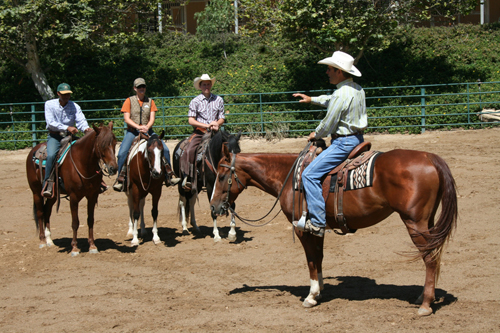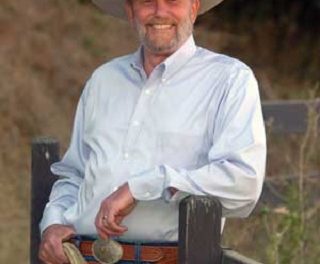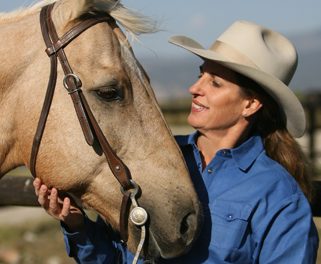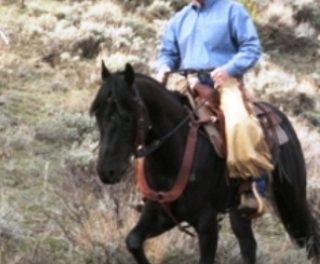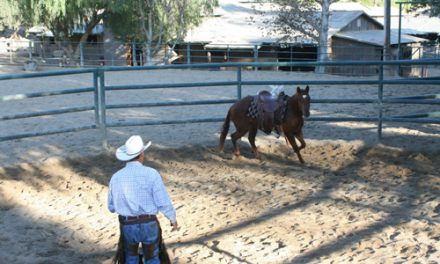 This summer I’ve had three young people come and ride with me in an apprenticeship program. These are great students and I enjoy working with them. On our first day together I gave them my “aspiring trainer” speech. I thought I’d share the condensed version with you.
This summer I’ve had three young people come and ride with me in an apprenticeship program. These are great students and I enjoy working with them. On our first day together I gave them my “aspiring trainer” speech. I thought I’d share the condensed version with you.
My introductory admonition generally starts something like this, “While you’re here, I hope you’ll learn some principles and skills that will help you along on your horsemanship journey in years to come. During this time, you should try and emulate my style and do things as I recommend. When you leave here, you can sort through the information and file away what works for you and disregard those tools or techniques that really don’t fit your style. If you’re fortunate, you won’t end up being a “cookie-cutter” of Richard Winters. Rather, you’ll ultimately be the product of the many great horsemen and horsewomen you’ll have the privilege to ride with.”
If I still have my young charges’ attention, I’ll continue, “I’m not going to show you the way to work with a horse, but rather I’m going to show you a way. I’m not so conceited as to think that it can only be one way – my way.” Horsemanship is an art, not a science. The principles of our craft will stay the same. However, we should grant others the latitude to develop their own particular style.” Now I’d probably throw in a clever quotation, something like this: “Just because it doesn’t come out of my chimney doesn’t mean it’s not smoke!”
Now I’m really on a roll. My monologue continues. “This is a mistake some young aspiring trainers make: they’ll be at a show, or in the practice pen, and they’ll see a trainer school a horse in a specific manner to correct or teach a certain behavior. The novice observer thinks that must be the technique they should employ next time they’re in what they perceive as that same situation. What they don’t understand is that is what the trainer did that time with that particular horse. That circumstance was probably unique, and the trainer might not implement that same method in a host of similar situations. All this is to say that just about everything is right sometimes, and almost nothing is right all the time.”
About this time in my mini-lecture I’ll throw in a joke just to show my good humor and to drive home a point. “A young man was watching an older horseman working with his equine partner, and he was very impressed. He asked the horseman how he acquired such good judgment in dealing with horses.” The old horseman replied, ‘Experience!’ The young man questioned, ‘How did you get all that experience?’ Without hesitation the horseman confessed with authority, ‘Bad judgment!'”
Hopefully at this juncture, my young apprentices laugh at the joke and more importantly get the point. There will be no substitution for the endless hours invested and the multitude of horses needed to encounter on their way to this place called horsemanship.
This brings me to another point that I’ll attempt to share with my aspiring horsemen and women: “You can put whatever value on your time invested here as you want. I hope that some of my horsemanship principles and techniques work for you and will enhance your own training program. However, there is one thing I will guarantee to give you that is absolutely necessary and cannot be substituted. I’m going to give you the opportunity to work with and ride a lot of different horses. Until you’ve worked with, not dozens, but hundreds of horses, your frame of reference is too small to competently handle the myriad of situations horses will present. The novice trainer will talk with me about a colt they’re riding and describe a behavior that has stumped them. They’ll say, ‘I’ve never had one do that before.’ Well I bet that’s right! Actually, they’ve really only started about six colts in their short training career. It’s no wonder they’ve not experienced that particular behavior before. Their frame of reference is too limited.”
My lecture probably goes a little long, and my captive audience is probably only being polite. I wonder if these young people are craving this as much as I did when I was their age. Time will tell. So, yes, it’s true. For the young would-be-horseman, the work is hard and the pay is poor. Sometimes it’s a school of hard-knocks with tuition of blood, sweat, and tears. Yet for those willing to invest in themselves, the journey is its own reward. For now, however, “Let’s saddle up a couple more horses before we go to lunch.”

